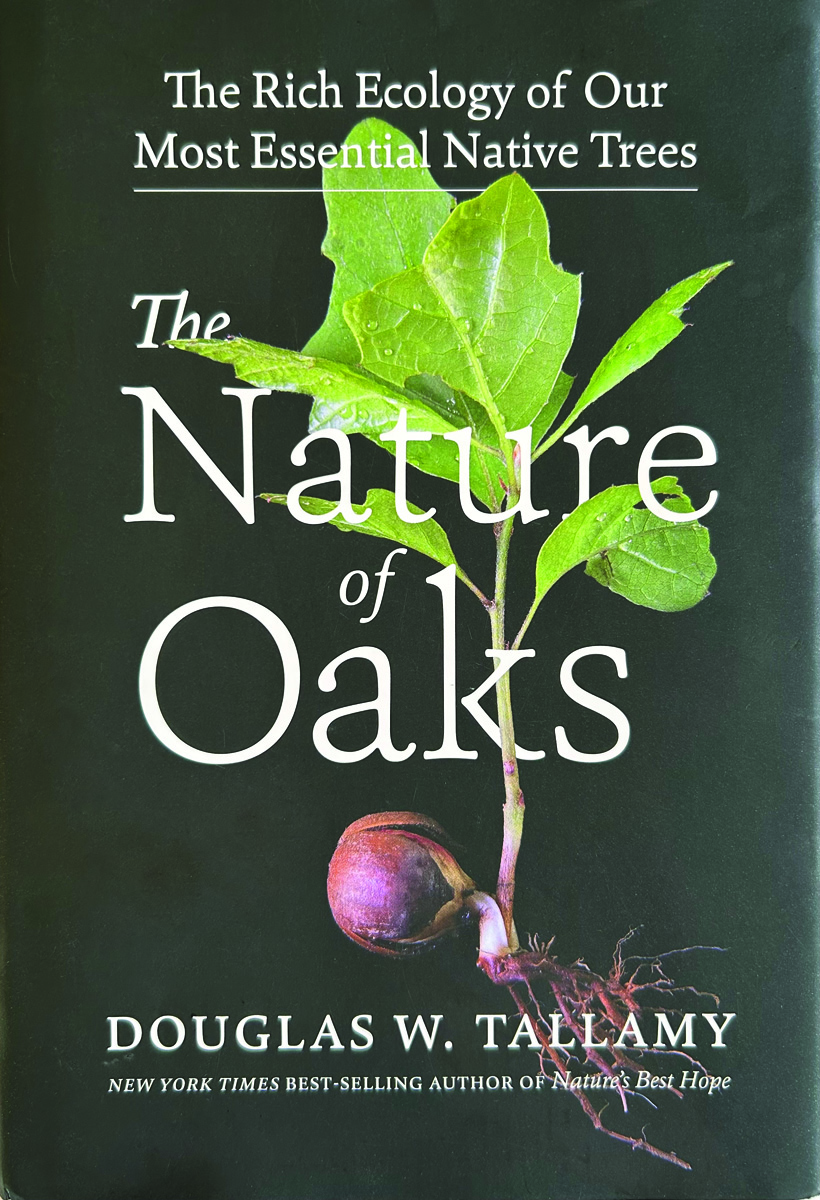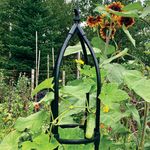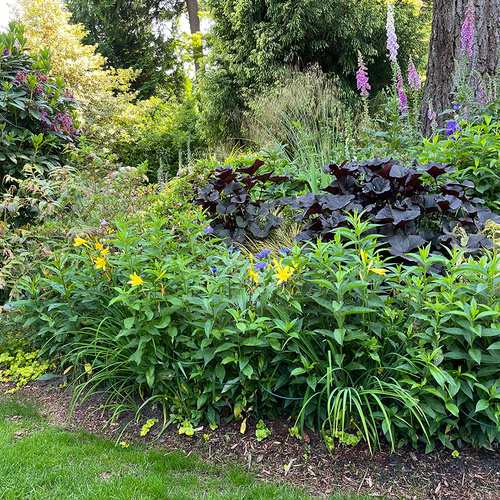Happy Friday, GPODers!
We’re ending the week on the West Coast with Jeanne Erdahl in Washington, just outside of Seattle. Jeanne’s garden started as a blank slate, with nothing growing under the mature trees on their lot aside from a mess of Himalayan blackberries (Rubus armeniacus). Considered one of the most invasive plants on the West Coast, I can only imagine the battle that ensued to remove those thorny thickets. However, 25 years of work has completely transformed the space, and it’s hard to imagine what once was when you look at the lush garden that exists today. Today she is highlighting some beautiful moments from this spring.
This garden overlooking Lake Sammamish outside of Seattle is about 25 years old and started as a bare lot covered with Himalayan blackberries but also two magnificent old trees: a Douglas fir (Pseudotsuga menziesii, Zones 4–6) and a western redcedar (Thuja plicata, Zones 5–7). When we found out that the only way we could get a septic system on this property was by having a series of sand mounds installed, my partner declared that we would never get anything to grow on them. A minute’s reflection would have told us that they would be the best possible growing medium for any number of plants.
We started out with a professional garden design, but every plant we installed ourselves, and of course the design evolved and changed greatly over the years. Now in our 80s, we still maintain the property by ourselves, with only help pruning the taller trees once a year.
I’m never sad for long when some treasured plant bites the dust. It means that I can go buy or propagate a new plant!
A Chinese fringe flower (Loropetalum chinense, Zones 7–9) backed by an Exbury azalea and Burkwood viburnum (Viburnum × burkwoodii, Zones 4–8), all in bloom
 The 20 year-old patch of rodgersia just popping up in the spring
The 20 year-old patch of rodgersia just popping up in the spring
 One of the myriad native columbine
One of the myriad native columbine
 A particularly graceful Rainbow leucothoe (Leucothoe fontanesiana ‘Rainbow’, Zones 5–9) vining through an azalea on one of the mounds
A particularly graceful Rainbow leucothoe (Leucothoe fontanesiana ‘Rainbow’, Zones 5–9) vining through an azalea on one of the mounds
 Part of our field of foxgloves (Digitalis purpurea, Zones 4–9) in full bloom with the Ruby Falls redbud (Cercis canadensis ‘Ruby Falls’, Zones 5–9) in the foreground and a variegated dogwood behind
Part of our field of foxgloves (Digitalis purpurea, Zones 4–9) in full bloom with the Ruby Falls redbud (Cercis canadensis ‘Ruby Falls’, Zones 5–9) in the foreground and a variegated dogwood behind
 Japanese forest grass (Hakonechloa macra, Zones 5–9), probably my all-time favorite plant, with iris at the edge of our dry streambed
Japanese forest grass (Hakonechloa macra, Zones 5–9), probably my all-time favorite plant, with iris at the edge of our dry streambed
 Front mound planting of daylilies, garden phlox (Phlox paniculata, Zones 4–8), and Britt Marie Crawford ligularia (Ligularia ‘Britt Marie Crawford’, Zones 4–8)
Front mound planting of daylilies, garden phlox (Phlox paniculata, Zones 4–8), and Britt Marie Crawford ligularia (Ligularia ‘Britt Marie Crawford’, Zones 4–8)
 Japanese maple, maybe Bloodgood (Acer palmatum ‘Bloodgood’, Zones 5–8), which was a seedling from my sister, underplanted with blue star creeper (Isotoma fluviatilis, Zones 6–8)
Japanese maple, maybe Bloodgood (Acer palmatum ‘Bloodgood’, Zones 5–8), which was a seedling from my sister, underplanted with blue star creeper (Isotoma fluviatilis, Zones 6–8)
 In the front yard, a cottonwood (Populus deltoides, Zones 3–9) and young Douglas fir, longtime friends
In the front yard, a cottonwood (Populus deltoides, Zones 3–9) and young Douglas fir, longtime friends
 Native dogwood (Cornus nuttallii, Zones 7–9) in full bloom
Native dogwood (Cornus nuttallii, Zones 7–9) in full bloom
Thank you so much for sharing your delightful garden with us, Jeanne! Your space looks like a true woodland wonderland, and you’ve managed to create tons of fantastic flower and foliage interest despite the planting challenges.
I hope you all have a wonderful weekend and are able to spend as much time as possible enjoying your garden. While you’re out there, consider snapping some photos to share with Garden Photo of the Day! Follow the directions below to submit photos via email, or send me a DM on Instagram: @agirlherdogandtheroad.
We want to see YOUR garden!
Have photos to share? We’d love to see your garden, a particular collection of plants you love, or a wonderful garden you had the chance to visit!
To submit, send 5–10 photos to [email protected] along with some information about the plants in the pictures and where you took the photos. We’d love to hear where you are located, how long you’ve been gardening, successes you are proud of, failures you learned from, hopes for the future, favorite plants, or funny stories from your garden.
Have a mobile phone? Tag your photos on Facebook, Instagram or Twitter with #FineGardening!
Do you receive the GPOD by email yet? Sign up here
Fine Gardening Recommended Products

isYoung Birdlook® Smart Bird Feeder with Camera
Fine Gardening receives a commission for items purchased through links on this site, including Amazon Associates and other affiliate advertising programs.
Upgraded Dual Granary Bird Feeder. G11 Smart Bird Feeder with Camera – The upgraded dual granary design allows for separate food dispensing, giving birds the freedom to choose while preserving the food’s original taste. With a 2L extra-large capacity, it reduces the need for frequent refills. The drainage design ensures the food stays dry and prevents spoilage from rain. Ideal as a camera bird feeder for birdwatching enthusiasts. 2K HD Camera & Close-Up Bird Watching. Experience clear bird watching with the G11 smart bird feeder. This bird feeder with camera features a 170-degree wide-angle lens and a 1296P HD camera, ensuring vibrant images and videos. With AI-powered recognition, it can identify over 16,000 bird species (subscription required, first month free) and provides extensive birding knowledge. Its unique design helps attract more birds to your backyard. App Alerts & Super Night Vision. The smart bird feeder camera detects motion within 0.5 seconds and sends instant notifications through the “VicoHome” app. With a 2.4G Wi-Fi connection, you can view real-time updates on bird activity right from your app. The video bird feeder also features night vision, ensuring vibrant images and videos even in low light conditions. Ideal for wild bird feeders, this advanced functionality enhances your bird-watching experience day and night.

The Nature of Oaks: The Rich Ecology of Our Most Essential Native Trees
Fine Gardening receives a commission for items purchased through links on this site, including Amazon Associates and other affiliate advertising programs.
The Nature of Oaks reveals what is going on in oak trees month by month, highlighting the seasonal cycles of life, death, and renewal. From woodpeckers who collect and store hundreds of acorns for sustenance to the beauty of jewel caterpillars, Doug Tallamy illuminates and celebrates the wonders that occur right in our own backyards. He also shares practical advice about how to plant and care for an oak, along with information about the best oak species for your area.

Lee Valley Garden Obelisks
Fine Gardening receives a commission for items purchased through links on this site, including Amazon Associates and other affiliate advertising programs.
Sturdy yet lightweight, these obelisks provide ample support for climbing plants while being easy to install and move. The medium obelisk stands 68 1/2″ high overall with a diameter of about 9 1/2″, compact enough for smaller containers indoors or out. The large size stands 86 1/2″ high with a diameter of 15 3/4″, ideal for larger outdoor spaces and containers.




